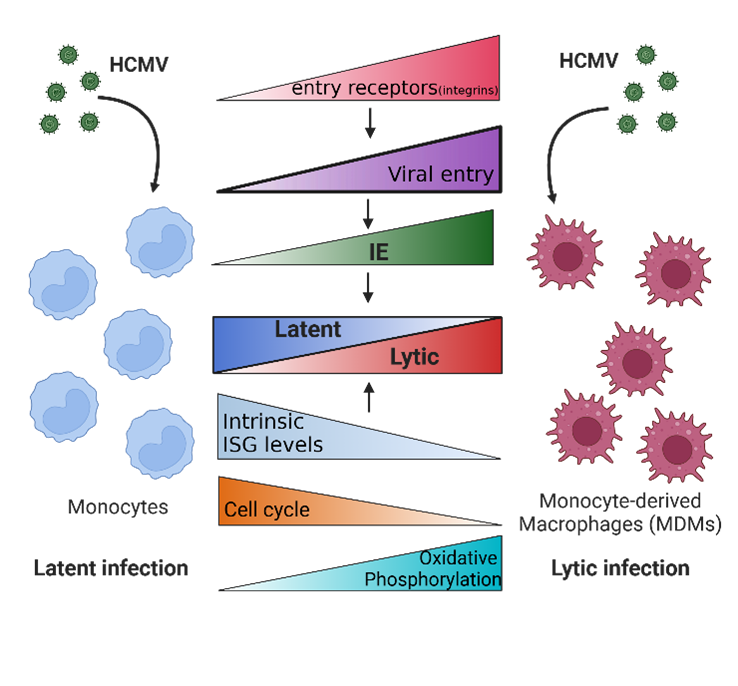Decoding viral latency
Like all other herpesviruses, infection with HCMV results in a persistent lifelong infection due to establishment of latency, which for HCMV was characterized in the monocytic lineage. Although reactivation from latency can cause life-threatening disease, the molecular mechanisms that control latency and reactivation are still not well understood. We have recharacterized HCMV gene expression in latency using single-cell RNA-seq as well as highly time resolved RNA-seq, revealing the governing principles of latent gene expression (Shnayder et al. mBio 2018, Schwartz and Stern-Ginossar, J Virol 2019, Rozman et al., Cell Reports 2022).
Using different RNA-seq methodologies along the establishment of lytic and latent infection and in different cell types we have investigated the molecular characteristics that determine HCMV infection outcomes, and we propose the existence of additional potential HCMV latency reservoirs (Schwartz et al., Nature Microbiol 2023, Schwartz and Stern-Ginossar Ann. N. Y. Acad. Sci. 2023, Kitsberg et al. BioRxiv 2024).
